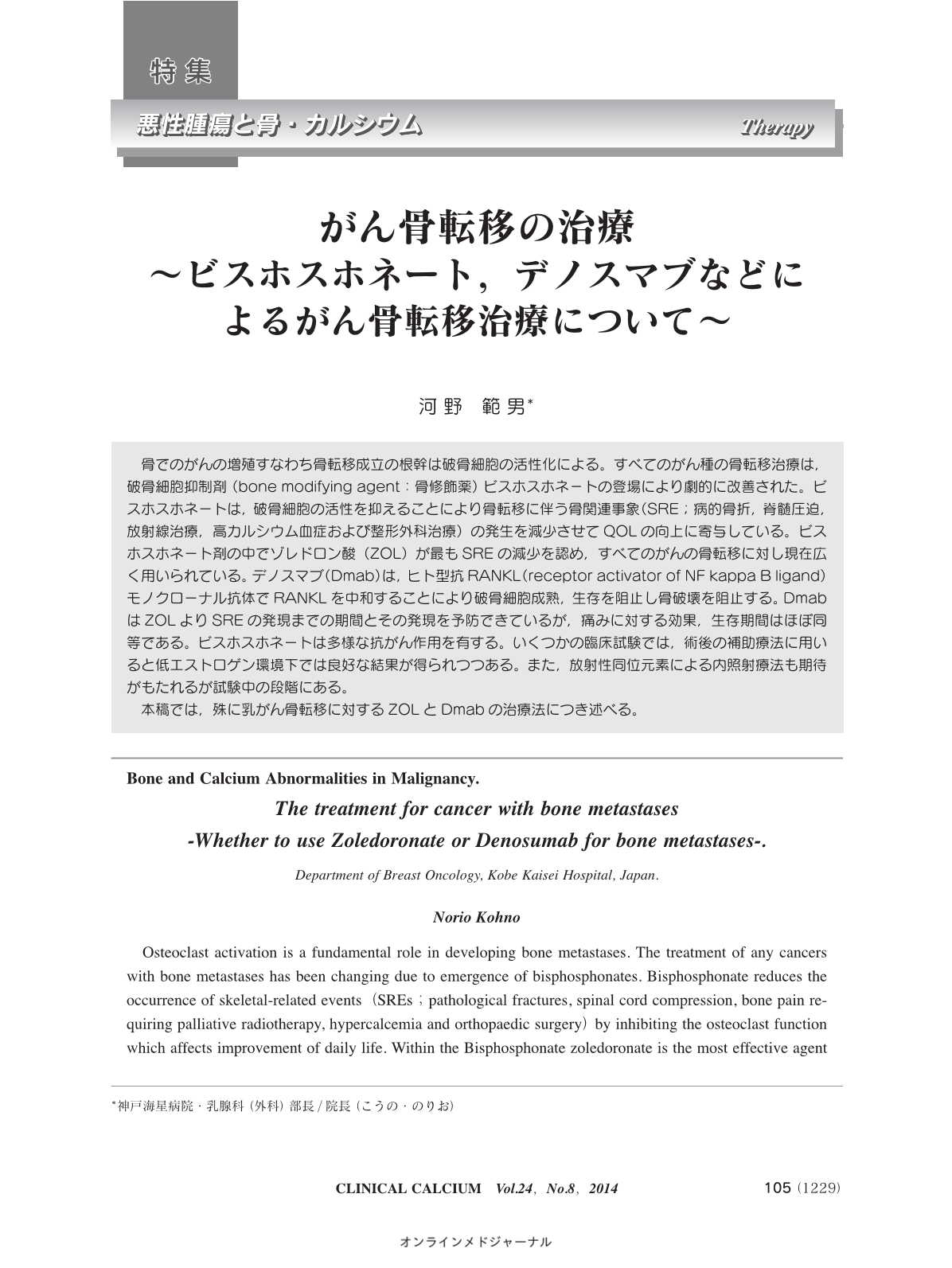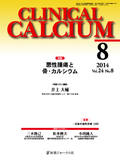Japanese
English
- 有料閲覧
- Abstract 文献概要
- 1ページ目 Look Inside
- 参考文献 Reference
骨でのがんの増殖すなわち骨転移成立の根幹は破骨細胞の活性化による。すべてのがん種の骨転移治療は,破骨細胞抑制剤(bone modifying agent:骨修飾薬)ビスホスホネ-トの登場により劇的に改善された。ビスホスホネートは,破骨細胞の活性を抑えることにより骨転移に伴う骨関連事象(SRE;病的骨折,脊髄圧迫,放射線治療,高カルシウム血症および整形外科治療)の発生を減少させてQOLの向上に寄与している。ビスホスホネート剤の中でゾレドロン酸(ZOL)が最もSREの減少を認め,すべてのがんの骨転移に対し現在広く用いられている。デノスマブ(Dmab)は,ヒト型抗RANKL(receptor activator of NF kappa B ligand)モノクローナル抗体でRANKLを中和することにより破骨細胞成熟,生存を阻止し骨破壊を阻止する。DmabはZOLよりSREの発現までの期間とその発現を予防できているが,痛みに対する効果,生存期間はほぼ同等である。ビスホスホネートは多様な抗がん作用を有する。いくつかの臨床試験では,術後の補助療法に用いると低エストロゲン環境下では良好な結果が得られつつある。また,放射性同位元素による内照射療法も期待がもたれるが試験中の段階にある。 本稿では,殊に乳がん骨転移に対するZOLとDmabの治療法につき述べる。
Osteoclast activation is a fundamental role in developing bone metastases. The treatment of any cancers with bone metastases has been changing due to emergence of bisphosphonates. Bisphosphonate reduces the occurrence of skeletal-related events(SREs;pathological fractures, spinal cord compression, bone pain requiring palliative radiotherapy, hypercalcemia and orthopaedic surgery)by inhibiting the osteoclast function which affects improvement of daily life. Within the Bisphosphonate zoledoronate is the most effective agent in terms of reducing SREs. Denosumab is a fully human monoclonal antibody that binds to human receptor activator of nuclear factor kappa-B ligand(RANKL),that blocks the formation of osteoclast and inhibiting osteoclast-mediated bone destruction. Denosumab was superior to zoledonate in terms of prevention of SREs. But, denosumab was similar to zoledronic acid for quality of life, pain and overall survival. On the other hand bisphosphonate has diverse anti-tumor effects and many trials showed beneficial to survival when it used for breast cancer in an adjuvant setting especially low estradiol circumstances. Radionuclides are another treatment option for bone pain. New targeted therapies and radionuclides are promising option for treatment of bone metastases but still under investigation. This article will focus on medical treatment for bone metastases especialy from breast cancer.



